Proper humidity levels must be kept in basements and crawl spaces to prevent mold growth, structural damage, and poor indoor air quality. A dehumidifier is one of the most powerful tools for controlling moisture in these places, but it can be challenging to determine how often it should run. This article provides an in-depth guide on dehumidifier usage by examining humidity levels, seasonality, and specific environmental conditions. Knowing the correct dehumidifier runtime will protect your home and enhance air quality while ensuring energy efficiency.
What factors determine how often a dehumidifier should run?
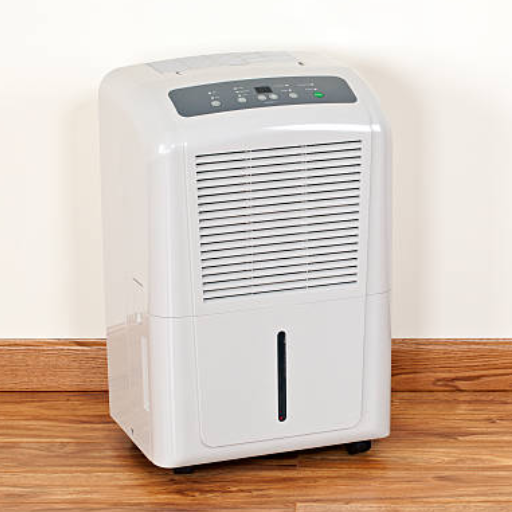
Several factors influence how often a dehumidifier should run, including:
- Humidity Levels: The primary determinant is the relative humidity of the indoor space. Ideally, the moisture should be maintained between 30-50%. Higher initial humidity might necessitate longer runtime.
- Room Size: Larger rooms require more time to dehumidify than smaller spaces, impacting the frequency and duration of operation.
- Seasonal Variations: During warmer, humid months, dehumidifiers run more often, while cooler, drier seasons may require less frequent usage.
- Environmental Conditions: Spaces that generate a lot of moisture, such as basements, bathrooms, or poorly ventilated rooms, might require more consistent dehumidifier use.
- Dehumidifier Capacity: The size and efficiency of the dehumidifier also play a critical role. Higher-capacity units can handle moisture removal more effectively in less time.
You can determine the appropriate runtime for optimal moisture control and energy efficiency by assessing these variables.
Understanding relative humidity levels in your home
Relative humidity (RH) refers to the amount of water vapor in the atmosphere relative to the maximum amount held at a particular temperature. Ideally, indoor RH levels should fluctuate between 30% and 50%, with anything below or above leading to different problems. Mold growth, dust mites buildup, and general discomfort are associated with high RH levels (over 60%). At the same time, dry skin, breathing irritations, and wooden furniture or flooring damage may result from low RH levels (less than 30%).
Hygrometers should measure your home’s moisture levels for effective RH monitoring. At very high levels, a dehumidifier can improve ventilation or seal cracks that might let in water vapor. On the other hand, if they are too low for comfort, a humidifier may help. Appropriate adjustments based on seasonal variations and changes in household activities like cooking and showering are key to ensuring optimum RH levels, enhancing comfort, and saving energy.
The impact of room size and moisture sources
Room size and specific sources of moisture highly impact indoor humidity levels. Bigger rooms generally disperse moisture more evenly, making relative humidity (RH) more straightforward to control. Smaller areas, however, can quickly change RH due to limited air volume. Moreover, bathrooms, kitchens, or locations close to leaks contribute to localized dampness, thus increasing humidity considerably. Dealing with these variables necessitates proper measures such as improving confined spaces through ventilation or sectioning off wet areas to maintain balanced indoor conditions.
Seasonal variations and climate considerations
Seasonal fluctuations and regional climate impact indoor humidity levels. Often, indoor heating systems significantly decrease relative humidity during winter, leading to dry air that affects people and building elements. On the other hand, in summer, especially in moist climates, there is generally higher humidity due to an increase in ambient moisture and temperature. Coastal locations or regions near tropical belts have higher annual average humidities, while arid regions keep steady low levels throughout.
Adaptive strategies are necessary measures for addressing these variations effectively. Humidifiers and dehumidifiers are moisture control devices that can modify indoor conditions to keep optimum levels within 30% – 50% RH, as stated by the EPA (Environmental Protection Agency). The external impacts can also be reduced through seasonal adjustments to ventilation, heat insulation, and sealing measures. For instance, adequately sealing windows and doors during winter minimizes dry drafts while increasing airflow across mechanical ventilation systems during summer mitigates excessive internal moisture. In the last analysis, comprehending the interplay between climatic factors that vary from season to season and enclosed spaces permits optimization of air quality as well as prevention of issues related to humidity, like the growth of molds or degradation of structures.
How long should you run a dehumidifier in the basement?
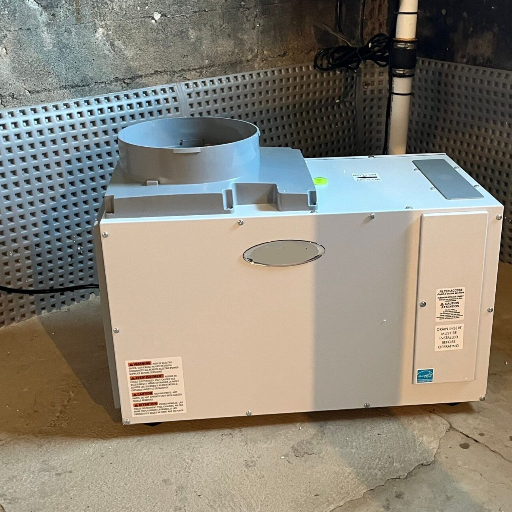
The time a dehumidifier should run in the basement relies on humidity, space magnitude, and device efficiency. Ordinarily, a dehumidifier must stay operational when relative humidity attains optimal limits, usually 30% to 50%. This is particularly true during humid seasons or basements prone to high moisture. Many modern dehumidifiers comprise hygrometers and automatic switching-off abilities, which ensures proper humidity management without any help from manual involvement. Regular supervision of conditions and configurations on the equipment will ensure efficient dampness management.
Ideal runtime for basement dehumidifiers
Several factors determine how long a basement dehumidifiers run; these include the capacity of the dehumidifier, environmental conditions, and the humidity level you need to maintain. A typical moisture level in moderately damp basements can be maintained by running such a humidifier for at least 10-12 hours daily. Nonetheless, this may mean continuous operation during moist or rainy periods, mainly if this space allows excess condensation and mold growth. It is advised to keep running it until the relative humidity settles within the range desired in the room. Modern dehumidifiers with built-in hygrometers make this easy by alternating on and off to retain constant conditions. To ensure that they work efficiently for longer durations, you should always frequently check whether anything is blocking any drainage area or emptying its tank.
Signs of excess humidity in basements
Signs of excessive humidity in basements usually comprise an incessant moist or moldy smell, visible appearance of molds on walls, floors, and other items kept in the basement, as well as droplets on windows or any other surfaces that are cold. Besides, you can also identify water marks on walls and ceilings, paint flakes off, and even distorted timber. Another evident sign is always having a damp atmosphere all around you. Once done with these issues, your house remains strong enough to support whatever is required by humans living in that house or near it since prolonged exposure to moisture and mold may result in various diseases.
Balancing energy efficiency and moisture control
For example, striking a balance between energy efficiency and moisture control necessitates completely knowing about ventilation, insulation, and humidity control. For instance, proper ventilation is essential to reduce indoor humidity levels, especially in kitchens, bathrooms, or basements. When appropriately installed, energy-efficient exhaust fans enable constant air exchange that keeps excess humidity at bay without trading off energy savings. Conversely, high-grade insulation is vital to prevent condensation caused by temperature variation between outdoor and indoor environments; this can be done using materials like spray foam or fiberglass to create thermal barriers with low energy costs.”
A dehumidifier or programmable HVAC system with built-in humidity controls must be employed to keep indoor relative humidity within 30% to 50%, which is favorable for human comfort and mold prevention. Sealing air leaks around windows, doors, and other openings is another way to conserve energy and prevent moisture from entering the house. On the other hand, using energy-efficient appliances and maintaining a well-sealed building envelope are some of the sustainable practices that help control energy usage and moisture management on a long-term basis. By integrating these methods, homeowners can create a comfortable, healthy living environment while minimizing energy consumption.
Is it necessary to run a dehumidifier in a crawl space 24/7?
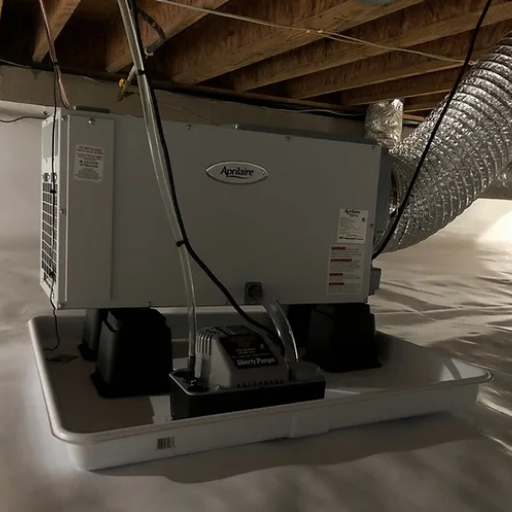
A crawl space dehumidifier doesn’t have to be run 24/7; it will depend on the situation. These include ambient humidity levels, ventilation aspects, and the presence of moisture issues. However, if this crawl space regularly experiences elevated humidity above 60%, it may be necessary to run a dehumidifier throughout to prevent mold growth and structural damage. But if you have the proper sealing, insulation, and adequate ventilation for your crawl space, you can use the dehumidifier periodically. One must maintain regular checks with a hygrometer to determine when the appliance should be used.
Optimal runtime for crawl space dehumidifiers
The optimal runtime for a crawl space dehumidifier depends on various factors, such as the level of humidity in that area, its size, and the general ventilation and insulation conditions prevailing there. Generally, a dehumidifier should operate until the space’s relative humidity (RH) consistently remains between 30-50%, the recommended range to prevent mold and mildew. For spaces with persistent high humidity or inadequate sealing, the device may need to run continuously or at least for 8-12 hours daily.
Modern dehumidifiers often have built-in hygrometers and automatic controls that can adjust their operation depending on the moisture levels, which helps save energy while simultaneously providing an optimum environment. Perhaps in the case of a well-sealed crawl space with moisture barriers, the dehumidifier may only be required to operate intermittently, for example, during very humid seasons. A hygrometer standing by itself must monitor RH levels and adjust runtime accordingly periodically. You need to maintain your dehumidifier to work consistently over time regularly.
Monitoring crawl space humidity levels
Maintaining optimal crawl space humidity levels requires consistent monitoring and proactive adjustments. As recommended, I use a reliable standalone hygrometer that tracks relative humidity (RH) to keep it between 30% and 50%. I increase dehumidifier usage during particularly humid seasons while ensuring that moisture barriers and seals are intact. Regular maintenance, like cleaning filters or checking drainage systems, improves my dehumidifier’s efficiency and helps avoid any future issues, such as structural damage or mold growth.
Benefits of consistent dehumidification in crawl spaces
Implementing consistent dehumidification strategies in crawl spaces brings many essential advantages, such as structural integrity, indoor air quality, and general energy efficiency. This will be good for your building and health because it keeps moisture levels at a level that favors the growth of fungi, mildew, and dust mites found in wet places. It also helps to prevent wood rot, corrosion of metal components, and other moisture-related damage, thus ensuring the durability of the foundation and substructure.
Consistent humidity control can also mitigate musty odors and improve air circulation, improving overall living conditions. Energy-wise, well-maintained humidity levels will prevent HVAC systems from overworking due to high moisture levels, which may also lower energy consumption and costs. Over time, these techniques, coupled with proper insulating materials and vapor barriers, shall protect the crawl space and afford homeowners a healthier overall home environment.
Can you leave a dehumidifier running all the time?
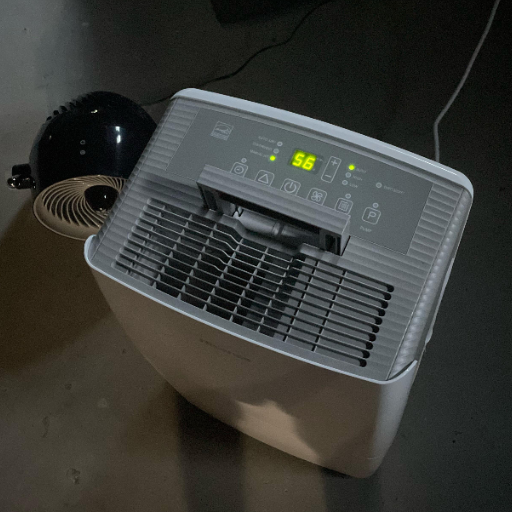
Dehumidifiers can run continuously; however, it must be done using the correct settings and conditions. In most cases, modern dehumidifiers can always be on with such features as automatic shut-off when the desired humidity level is reached. On the other hand, it is essential to set an appropriate target humidity level of between 30% and 50%. This will enable good performance without a lot of work on the unit. Also, always ensure you do some regular maintenance like cleaning filters and checking water reservoirs and draining systems to operate safely and efficiently.
Pros and cons of continuous dehumidifier operation
Running a dehumidifier continuously has its pros and cons, too. On the one hand, continuous operation helps maintain steady humidity levels that prevent mold from growing, thus saving properties from being damaged by excessive moisture (Ponge). Modern models have been designed to be energy-saving, making continuous use feasible and convenient through auto-shutoff options. Furthermore, some models provide an option for constant drainage, thereby eliminating frequent emptying of water containers.
However, they do have some limitations. This can cause a rise in power utilization, leading to higher electricity bills, especially if the unit is not energy-efficient. Moreover, it speeds up the wear-and-tear process of the gadget, thus reducing its life span. Performance problems may occur if one does not care for them by cleaning filters or watching out for drainage systems. Therefore, even though continuous operation has advantages under certain circumstances, it should be monitored carefully and regularly to ensure effectiveness and durability.
Energy consumption considerations
The amount of energy consumed depends on several factors, such as the device’s efficacy rating, period of operation, and climate conditions. Power-efficient units labeled with Energy Star use less energy while providing optimum performance. Continuous operation can lead to inflated costs if you don’t maintain your AC system well since dirty filters or blocked airflow make the system work harder than usual. To balance comfort with energy efficiency, one should set the thermostat at an energy-saving temperature level, use programmable or smart ones, and seal windows/doors tightly to minimize air leakage outside the house. Further, periodic replacement of air filters every one to three months checks for leaks in refrigerant gas, significantly saving unnecessary power wastage and prolonging equipment life spans.”
When 24/7 operation may be necessary
Running HVAC systems around the clock may not be advisable to save energy. However, some situations could warrant that kind of operation mode. For instance, hospitals, data centers, and laboratories require constant operation where safety depends on temperature control, equipment functionality, or integrity of research information. Furthermore, occupants would be uncomfortable in some areas, and buildings would suffer structural damages due to extreme temperatures that necessitate their continued functioning during such conditions. Nonetheless, even in such instances, programmable thermostats will help minimize costs through efficient zoning and regular servicing of machines utilized nonstop.
How do you know if your dehumidifier is running enough?
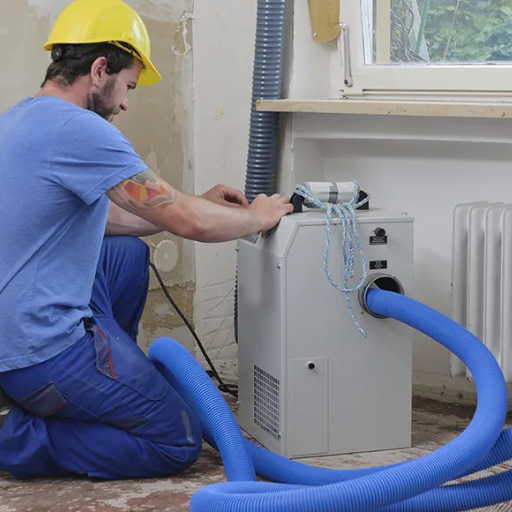
Several key indicators of humidity levels and the device’s performance determine whether your dehumidifier is running enough. Also, consider multiple aspects that can help you know if your dehumidifier is on enough. Find indoor relative humidity with a hygrometer, which typically ranges between 30% and 50%. If levels are consistently above this range, your dehumidifier is not adequately working or may be inefficient. Secondly, check for signs of indoor dampness, such as condensation on windows, musty smells, or mold growth, which indicate poor dehumidification. In addition, undersized units may struggle to maintain proper humidity levels, so assess your appliance’s capacity and size in terms of the area it serves. Furthermore, cleaning filters regularly and ensuring the correct placement of the device, like placing it centrally without any obstructions, can result in better functioning and preservation of the most suitable conditions.
Monitoring humidity levels with a hygrometer
To keep humidity levels in the house between 30-50%, I use a hygrometer to monitor them closely. I place it centrally, away from direct sunlight or drafts, for the most accurate readings. Regular inspection of the figures allows me to identify and fix high or low humidity on time, which can cause problems such as mold outbreaks and dryness. Additionally, I periodically re-calibrated the hygrometer following instructions given by the manufacturer.
Signs that your dehumidifier may need to run more often
If windows are foggy with water droplets often formed, there is a musty smell in my room, and you can see visible molds or mildew starting on walls; then this is a clear sign that my dehumidifier should be running more frequently. When wooden furniture begins to warp or when, even with the air conditioner running, I still feel cold dampness on my body, it means indoor moisture has gone up. Moreover, if the hygrometer indicates a consistent relative humidity beyond 50%, my dehumidifier usually operates too little to maintain ideal standards.
Adjusting runtime based on moisture removal rate
To adjust the runtime of my dehumidifier effectively, I calculate the rate at which it removes moisture by looking at its specification, which usually indicates how many pints of water it can remove per day. Higher humidity in my room or a larger area than what my dehumidifier can handle may warrant a longer duration. Conversely, if the moisture reduction rate is fast and remains consistently low below 50%, I can decide to cut down on time since too much energy would be consumed. I can set the runtime more accurately by employing a hygrometer to monitor real-time humidity. As such, efficient control over sewage that does not use excess energy will be maintained.
What are the ideal settings for running a home dehumidifier?
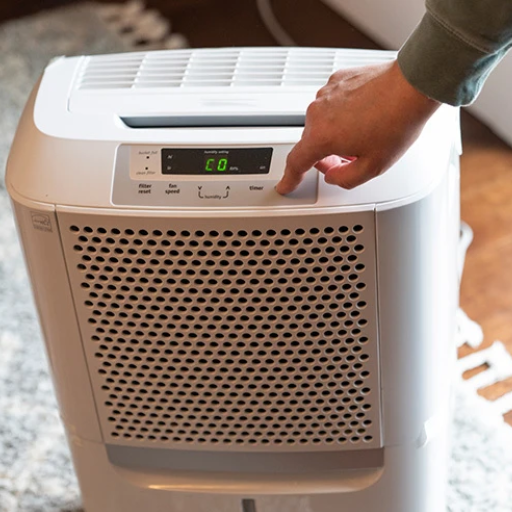
It depends on your specific circumstances for the best home dehumidifier settings. The average humidity level that should be maintained indoors is 30% – 50%. Setting your dehumidifier to a humidity of 45% would be a good compromise for most places. Moreover, ensure you get the right size dehumidifier based on the room’s square footage to increase efficiency. Continuous mode could work well in areas with high moisture levels, while timer or sensor control mode may help manage runtime in more stable conditions. Always consult the manufacturer’s instructions for adjusting settings for optimal performance.
Recommended humidity levels for different areas of your home
The ideal humidity levels depend on the space in question. Experts recommend maintaining humidity between 30-50 percent for comfort and air quality in living rooms and bedrooms. Basements, which usually have higher moisture contents, need around 30-40% not to breed molds. In bathrooms and kitchens, cooking or bathing often leads to humid air, which requires going below 50% as this will reduce excess moisture buildup in these crucial areas. Regularly measure indoor relative humidity with a hygrometer; use an appropriate dehumidifier or humidifier for each specific environment.
Setting the correct humidity threshold on your dehumidifier
Knowing your space’s best relative humidity level is necessary before you can set the correct humidity threshold on your dehumidifier. Keeping the moisture content between 30 and 50% RH for most indoor spaces is optimal. This range helps minimize allergens, dust mites, and mold growth while maintaining an acceptable atmosphere. If you are dealing with particular parts, such as a basement or storage area, aim at 30-40% RH to avoid excessive dampness and mold proliferation.
When programming your dehumidifier, use a hygrometer that measures current RH. The target should be below what the device has detected so that it operates effectively. Avoid excessively low levels (e.g., below 30%) because they can cause overdryness, making people’s respiratory systems uncomfortable. Seasonal changes may also require adjusting settings due to natural changes in humidity.
For places with high ambient moisture content or during summer, dehumidifiers might need more frequent operation to maintain desirable RH ranges. On the other hand, there may be less need for dehumidification during colder seasons. Continuous monitoring and slight adjustments guarantee a balanced and comfortable room without wasting energy on unnecessary dehumidification.
Adjusting fan speed and mode settings for optimal performance
To maximize performance, it is recommended that the fan speed be adjusted based on the specific room conditions. Higher fan speeds promote better air circulation and dehumidification if a larger area or high humidity is involved. Conversely, the fan’s speed should be reduced for smaller rooms or where noise reduction is critical. Changing to ‘a continuous’ mode will ensure consistent airflow, especially in areas prone to high humidity levels. When available, setting your AC unit to “auto” can also help save energy as it adjusts its function depending on prevalent conditions, thus balancing performance with power consumption. Setting appropriate fan and mode options is necessary to maintain an indoor environment with minimal strain on the equipment. Requirements for maintaining an ideal indoor climate while not bogging down the system
References
Frequently Asked Questions (FAQ)
Q: How long should a dehumidifier run in a basement or crawl space?
A: The duration a dehumidifier should run depends on the humidity levels and size of the space. Generally, running your dehumidifier for 12 hours a day or longer is recommended for basements and crawl spaces with high humidity. However, modern units with built-in humidistats can automatically cycle on and off to maintain desired humidity levels, which may result in less continuous runtime.
Q: What are the signs you need a dehumidifier in your home?
A: Some common signs that indicate you need a dehumidifier include musty odors, visible mold or mildew, condensation on windows, damp spots on walls or ceilings, and a general feeling of stickiness in the air. If you notice any of these signs, the humidity in your home is likely too high, and a dehumidifier can help improve the air quality and protect your home from moisture damage.
Q: How often should you run a dehumidifier in a basement?
A: Most basements recommend running a dehumidifier regularly during humid seasons or year-round if needed. In areas with high humidity, you may need to run your dehumidifier constantly or for extended periods. The key is to maintain the relative humidity in your home between 30% and 50%. Use a hygrometer to monitor humidity levels and adjust the dehumidifier’s runtime accordingly.
Q: Can I leave my dehumidifier on all the time?
A: While it’s generally safe to leave a dehumidifier on continuously, it’s not always necessary or energy-efficient. Modern dehumidifiers with built-in humidistats can automatically turn on and off to maintain desired humidity levels. This approach is more energy-efficient than running the unit constantly. However, running the dehumidifier continuously may be required for a short period in highly humid environments or during water damage restoration.
Q: How long should a crawl space dehumidifier run?
A: A crawl space dehumidifier should run as long as necessary to maintain proper humidity levels, typically between 30% and 50%. This often means running the unit for 12 hours daily, especially in humid climates. Some crawl space dehumidifiers are designed to run continuously, cycling on and off to maintain the desired humidity level. Always follow the manufacturer’s recommendations for your specific model.
Q: How do I choose a dehumidifier for my basement or crawl space?
A: When selecting a dehumidifier, consider the size of the space, the average humidity levels, and the area’s temperature. For basements and crawl spaces, look for units with high capacity (measured in pints per day), the ability to operate in cooler temperatures, and features like auto-defrost and continuous drainage options. Energy Star-certified models can help reduce energy consumption. Measure your space and consult sizing charts to ensure you choose a powerful dehumidifier that effectively removes moisture from the air in your area.
Q: What is the best time to run a dehumidifier?
A: The best time to run a dehumidifier is when humidity levels are highest, often during the night or early morning hours. However, if you live in a consistently humid climate, you may need to run your dehumidifier daily. Consider running the unit during off-peak electricity hours for energy efficiency if your utility company offers time-of-use rates. Ultimately, the goal is to maintain a consistent humidity level, so the best time to run your dehumidifier is whenever the humidity in your home exceeds your target range.
Q: How often do I need to empty my portable dehumidifier?
A: The frequency of emptying a portable dehumidifier depends on the unit’s capacity, the humidity levels in your space, and how often you run the dehumidifier. In highly humid environments, you might need to empty the tank daily. However, many modern dehumidifiers have larger tanks or continuous drainage options that can reduce the frequency of manual emptying. Check your dehumidifier’s water level regularly and empty it when it’s nearly complete to ensure optimal performance and prevent overflow.



